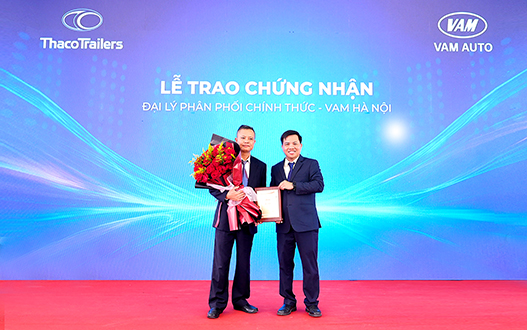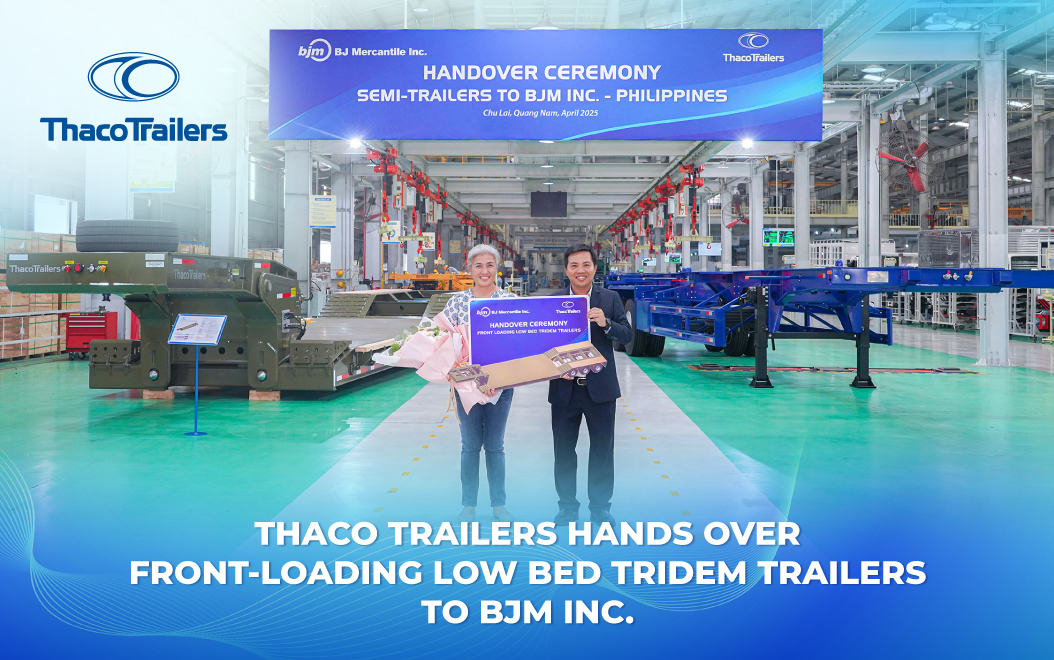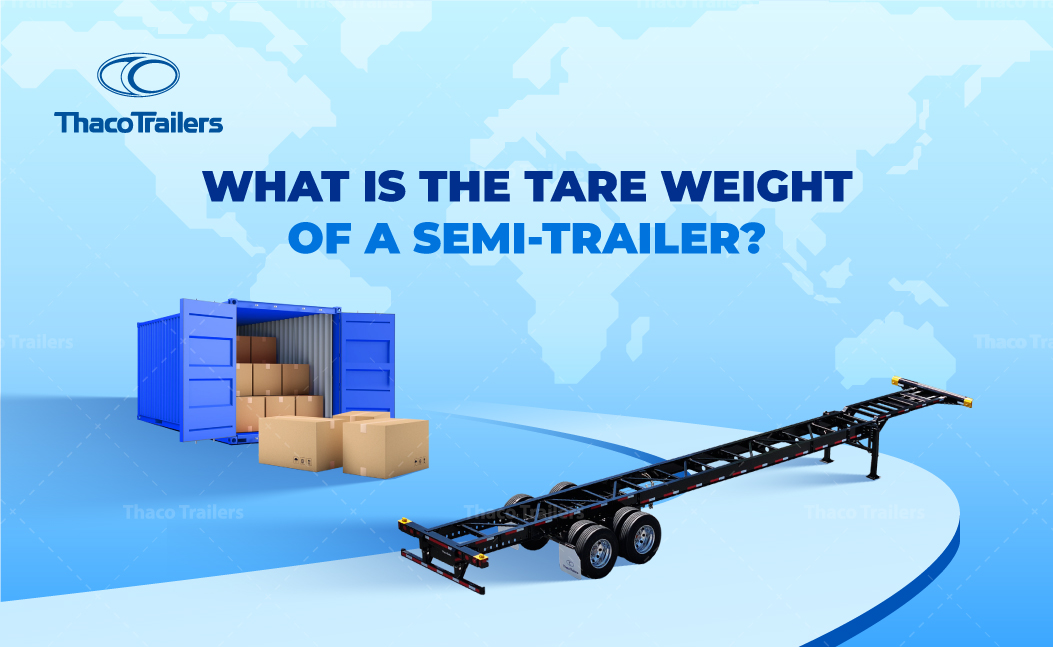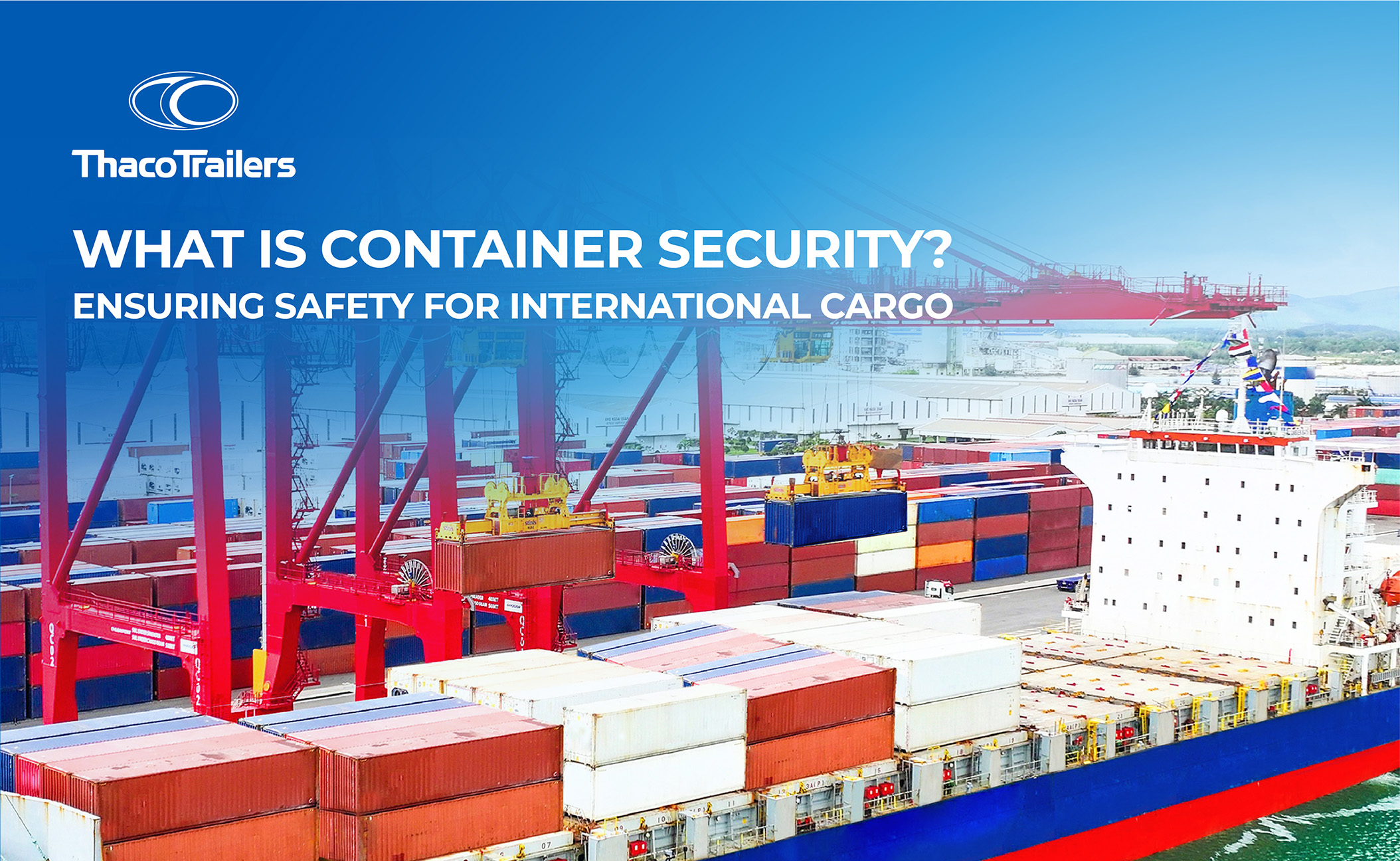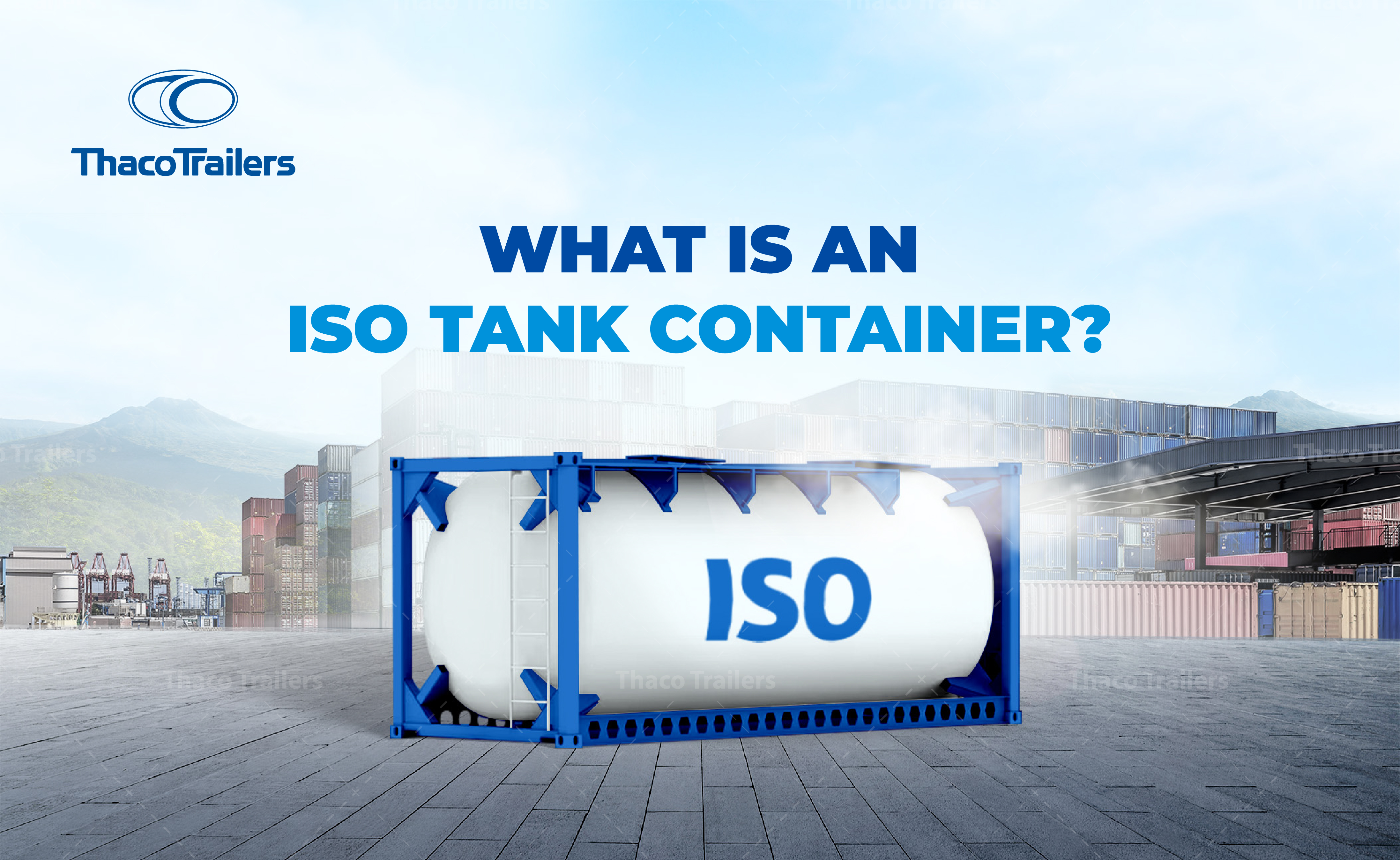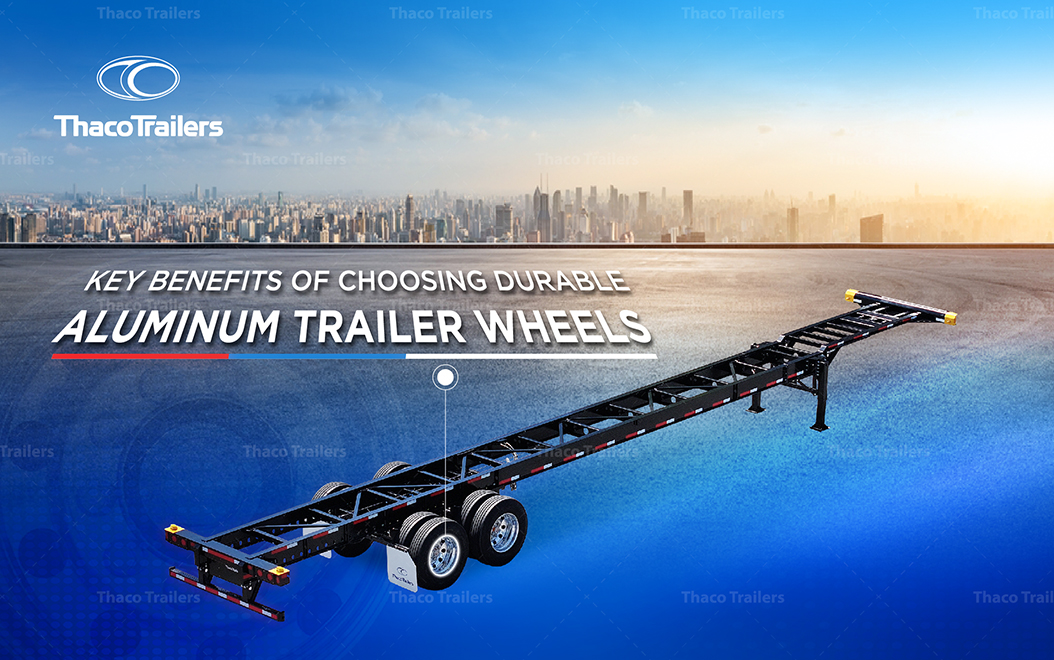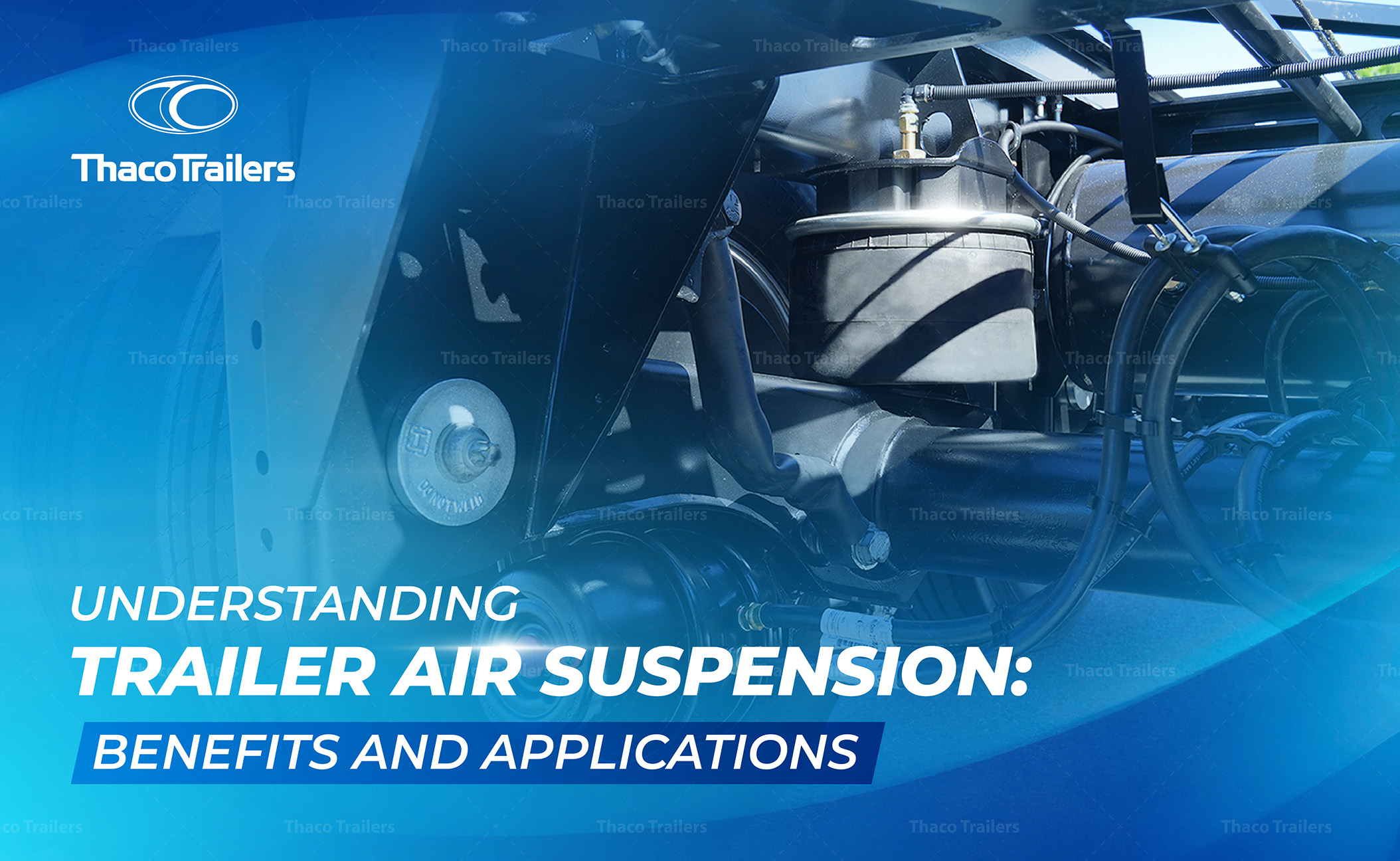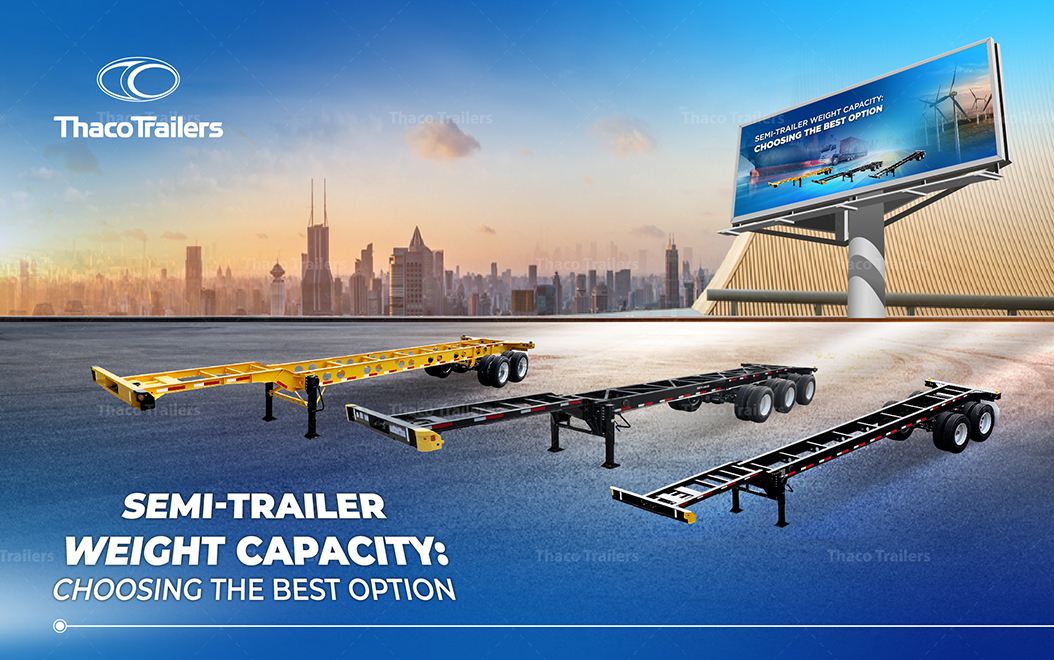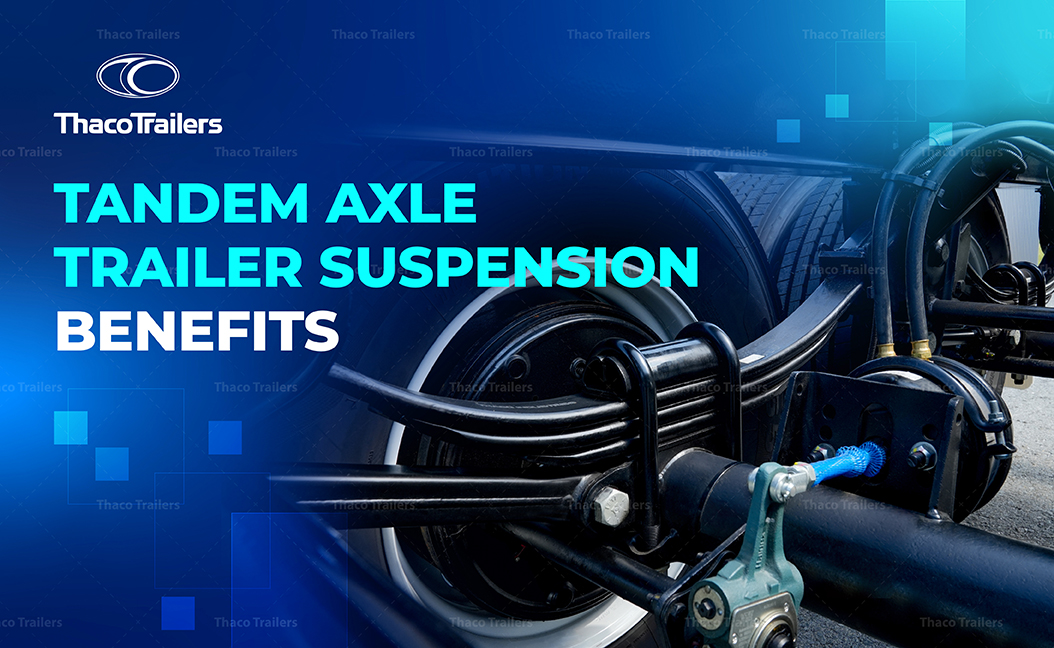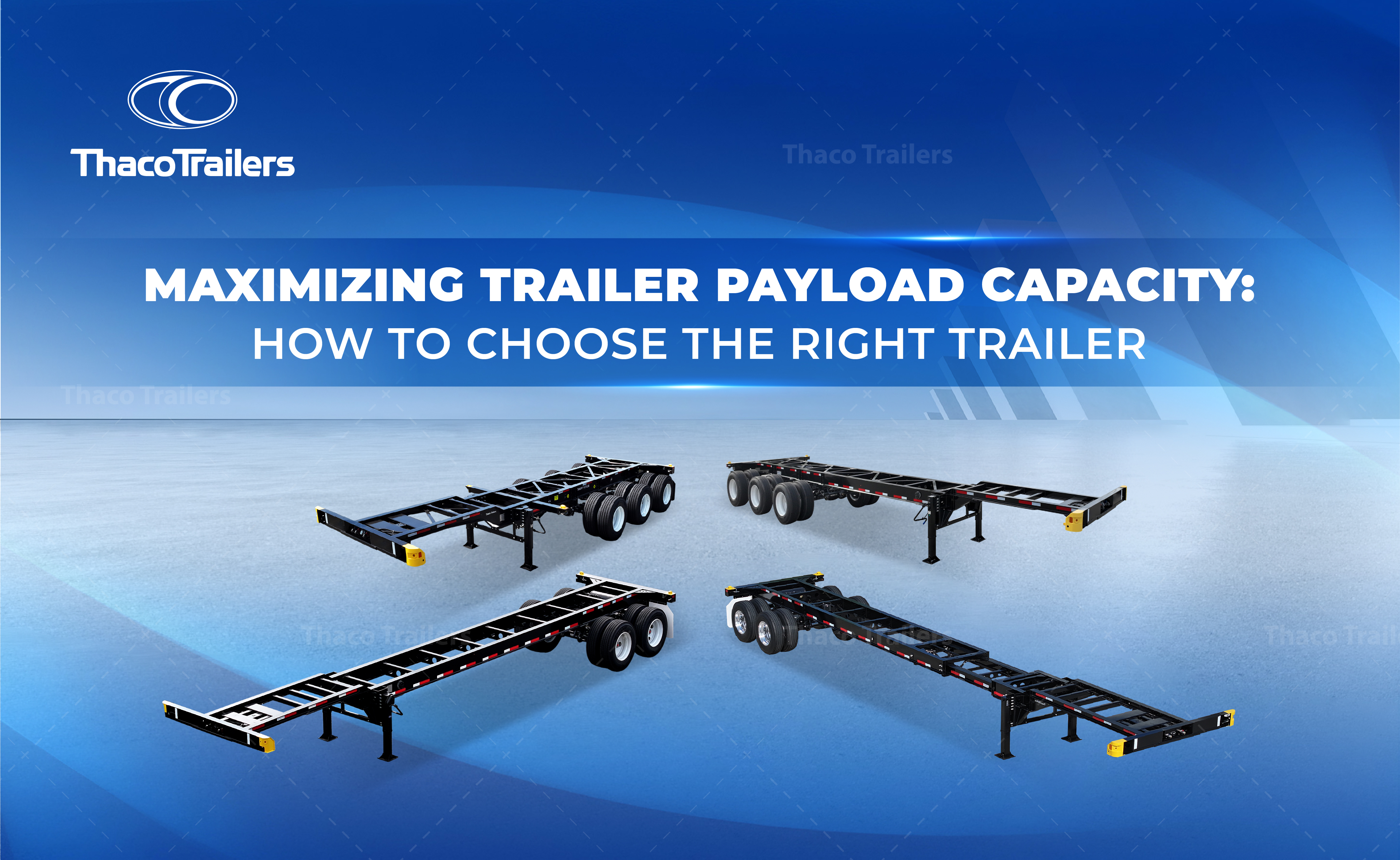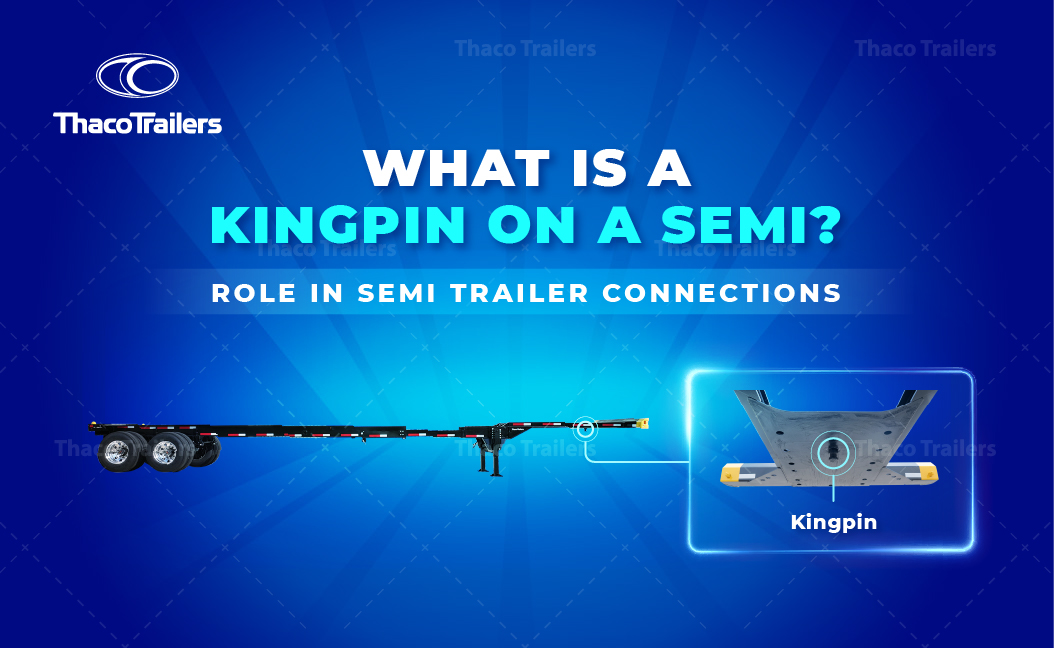UNDERSTANDING CHASSIS AND TRAILERS: A COMPREHENSIVE GUIDE
Chassis and trailers are indispensable elements of the transportation and logistics sector, as they provide the foundation for the efficient conveyance of products over various distances. It is essential to comprehend these structures’ functions, varieties, and key features, regardless of whether you are involved in the maritime industry or merely interested in their operation. This comprehensive guide of Thaco Trailers will delve into the fundamental structures of chassis and trailers, as well as their critical functions in contemporary logistics.
1. A comprehensive guide and the relationship between chassis and trailer
1.1 How to choose a suitable chassis for your trailer?
A crucial consideration in selecting the appropriate trailer is identifying its intended use. The trailer required for cattle is distinct from that used for freight transportation. Determining the main objective facilitates the selection of a trailer with appropriate attributes. Furthermore, consider use frequency and journey distance, since these factors influence durability, usability, and longevity, guaranteeing that you get a product that satisfies your requirements.
Trailer manufacturers produce trailers in several forms, each designed for certain use. Below, Thaco Trailers will show the prevalent categories comprise:
a. Container Transport
These trailers are specifically designed to carry intermodal containers, commonly used in shipping and freight industries. The chassis for container transport is constructed to securely hold 20ft, 40ft, or 45ft containers. There are two main types:
- Standard container trailers: The standard chassis is the most common type of container chassis used in the industry. It is designed to carry 20ft and 40ft containers and is typically used for general freight. The simplicity and widespread use of the standard chassis make it a reliable choice for many businesses. These chassis are also available in various lengths to accommodate different container sizes, including the 53ft container chassis, which is ideal for larger loads.
- Extendable trailers: Extendable container trailers are designed to transport containers of varying lengths with an adjustable chassis that extends to accommodate longer containers, such as 40ft, 45ft, and 53ft. This design offers greater flexibility than standard models and ensures seamless operations for businesses handling diverse container sizes.
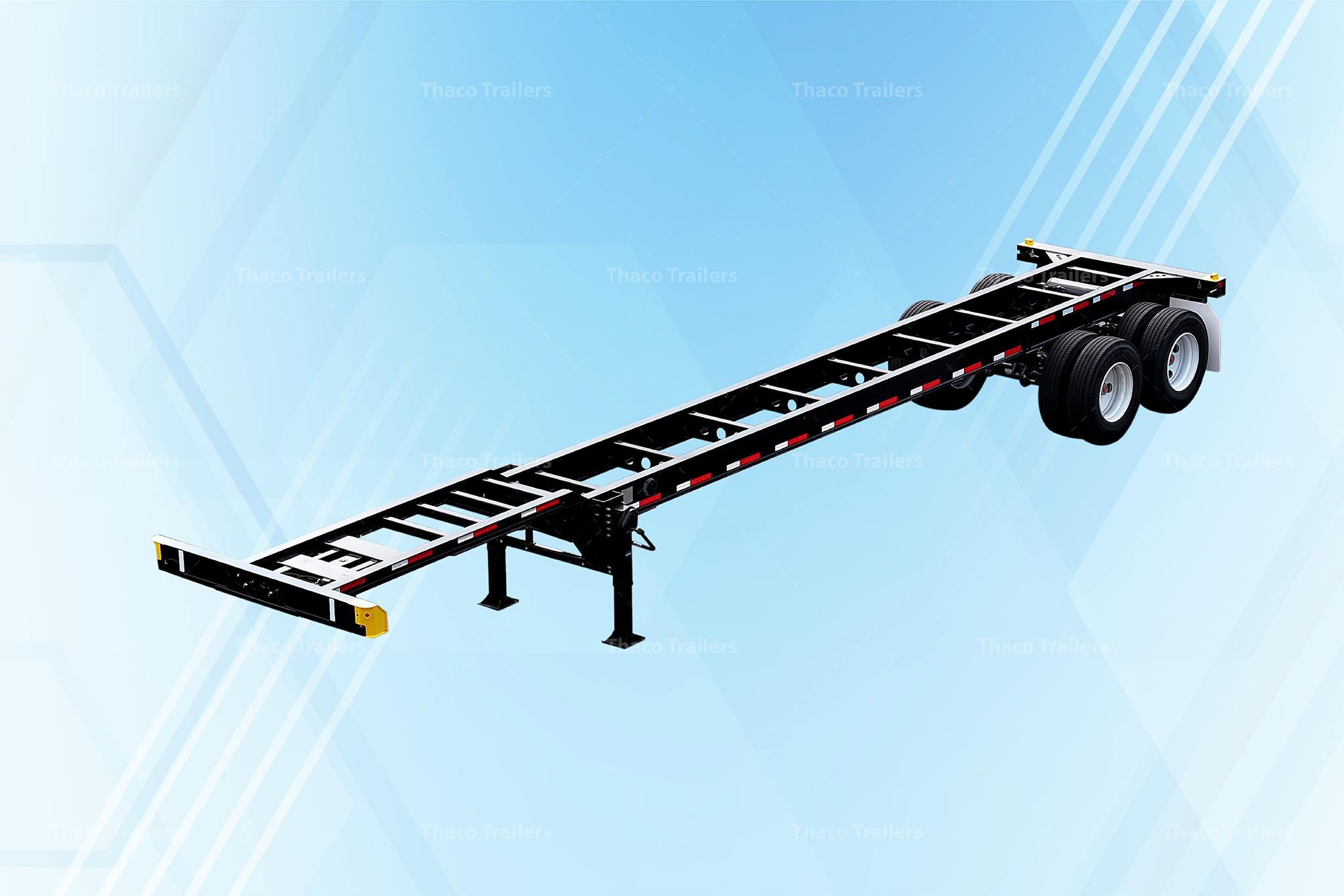
These trailers make it convenient to load and unload containers, and their standardized design ensures seamless integration with container handling equipment at ports and terminals.
b. Heavy Equipment Transport: Heavy equipment trailers, such as lowboy trailers or step deck trailers, are built to transport large, heavy machinery and vehicles, including construction equipment or agricultural machinery.
- Lowboy Trailers: Lowboy trailers are also called low beds, double drop, floaters, and low loaders based on the regions of the world. In any case, lowboy trailers keep a similar feature, the rear part of the trailer is raised, though being higher than the absolute well part, but not as high as the front part of the trailer.
- Step Deck Trailers: Also known as drop deck trailers, step deck trailers feature a two-level deck design that allows for the transportation of taller cargo while adhering to height restrictions. The upper deck, located near the gooseneck, transitions into a lower deck that provides additional clearance for oversized loads. This design makes step deck trailers ideal for hauling construction equipment, industrial machinery, and large freight that cannot fit within the height limits of standard flatbed trailers.
- Bulk Cargo: Bulk cargo trailers are designed to transport loose materials, such as sand, gravel, grain, or liquids, in large quantities. They come in various forms, each tailored to different types of bulk cargo.
- Dump Trailers: These trailers have a hydraulic lift system that allows the trailer bed to tilt and dump the cargo (e.g., gravel, soil) directly at the delivery site.
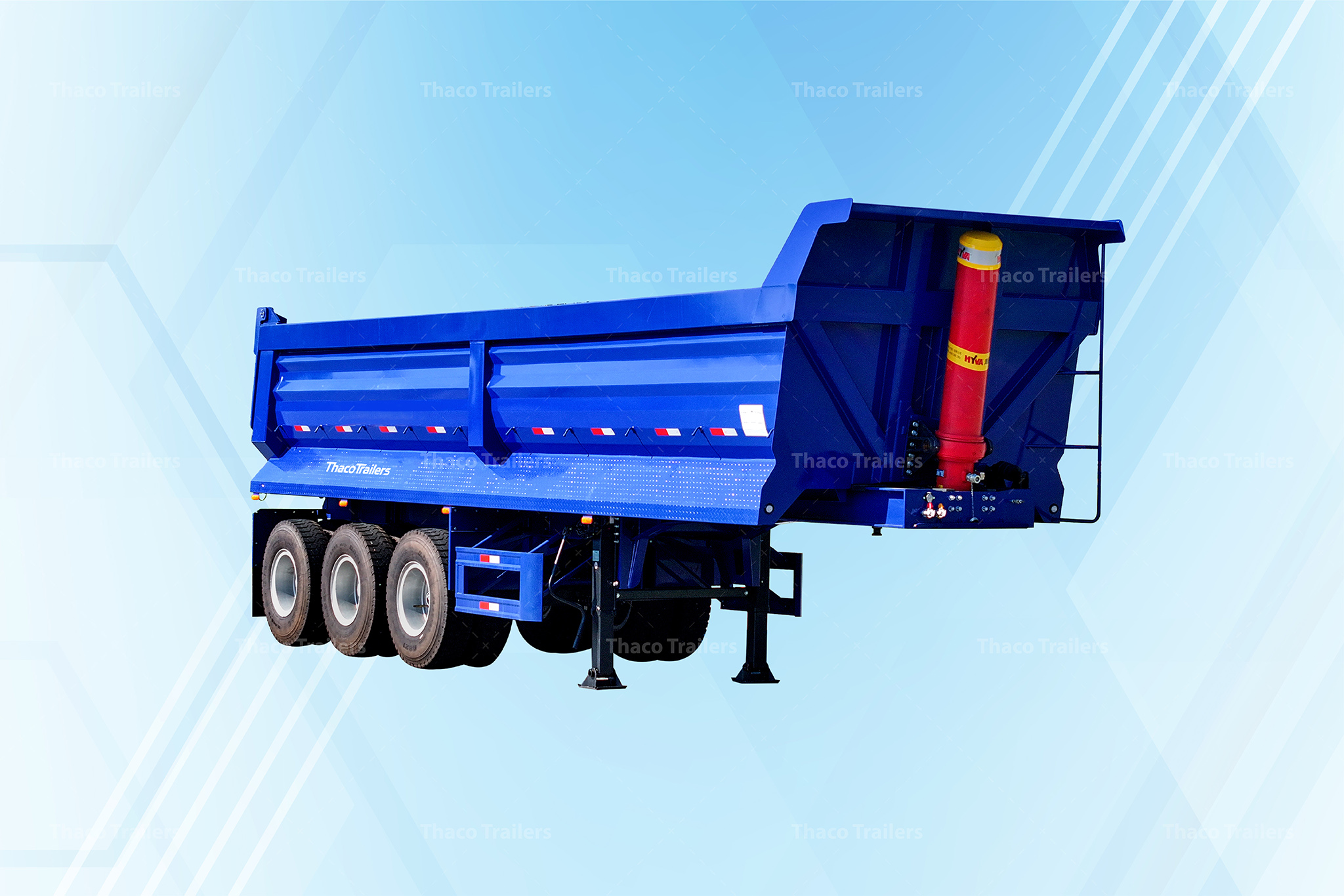
- Tank Trailers: A tank semi-trailer is a specialized container designed for transporting gasoline, diesel, and petroleum in liquid or gaseous form, as well as other hazardous and non-hazardous materials such as liquids, gases, and powders. Built to ISO standards, these trailers, known as ISO tank containers, offer a reliable solution for diverse transportation needs.
c. Features
The chassis has various features that enhance its performance and adaptability. When choosing a chassis, it’s important to evaluate the features based on your transport needs:
- Durability: Acquiring such high-quality material has sometimes been a problem with many manufacturing enterprises since they have to strike a balance between compliance with ASTM standards and achieving cost efficiency with good production volume. A chassis made of durable ASTM-accomplished steel reduces costs in maintaining and repairing. This results in a transport solution that is both safe and long-lasting, with the investment paying off over time.
- Suspension Systems: The suspension system absorbs road shocks and vibration to the chassis and container cargo. It plays a critical role in maintaining stability, particularly when driving on uneven surfaces or rough terrains
- Brake Systems: In addition to ABS, the chassis should have reliable air or hydraulic braking systems that provide adequate stopping power for the load being carried. Properly functioning brakes are essential for safe operation, especially when carrying heavy containers.
- Number of Axles: The number of axles on a trailer chassis directly affects its load-bearing capacity, maneuverability, and fuel efficiency. Trailer chassis axles are categorized into single, tandem, and tridem axle groups, featuring one, two, and three axles, respectively. Each axle consists of a solid or tubular shaft with hubs mounted at both ends. Unlike the truck’s steering axle, which typically uses single hubs, all trailer chassis axles are equipped with dual hubs, meaning each hub supports two wheels for enhanced stability and weight distribution. This ensures proper suspension function and enables the trailer to carry heavy loads.
>>Read more: Reputable semi-trailer manufacturer
1.2 Key factors to consider when choosing a good trailer
a. Payload capacity
The payload capacity is essential since it dictates the maximum cargo the trailer can transport. Excessive loading of the trailer might result in damage and increased maintenance expenses.
- Gross Vehicle Weight Rating (GVWR): The Gross Vehicle Weight Rating (GVWR) is shown on the vehicle’s Safety Compliance Certification Label, which is positioned on the driver’s side door lock face or the door latch post pillar. GVWR denotes the maximum permissible weight of a fully loaded vehicle, including both people and cargo.
- Axle Load Capacity: A load is classified as overweight if it surpasses the allowable limit for any axle group, even if the total weight remains below 80,000 pounds. Any freight that is above an axle weight restriction or the overall gross limit needs a permit for each highway along the route. An axle weight restriction denotes the maximum weight permissible on each axle. These standards save roads from deterioration and mitigate possible safety hazards resulting from rear axles. Each axle group, including single, tandem, and tridem-axle, has defined limitations and thresholds. Consequently, we have delineated permissible axle weight restrictions for your convenience, both as a general guideline and on a state-by-state basis:
| Single-Axle Trailers Legal Weight | Maximum of 20,000 pounds per axle. |
| Tandem-Axle Trailers Legal Weigh | Maximum of 34,000 pounds on two axles. |
| Tandem-Axle Trailers Permitted Weight | Maximum of 44,000 pounds in most states. |
| Tri-Axle Trailers Permitted Weight | Maximum of 20,000 pounds per axle for a total of 60,000 pounds (in most states except for California, Nevada, Oregon, and Washington). |
b. Type of trailer
Suggestion: There are different trailer types for various industries and uses, so understanding the options is key to choosing the right one:
- Flatbed trailers
A flatbed semi-trailer is widely used in the transportation industry for hauling many types of cargo. Its perfectly flat, open deck design makes it ideal for transporting a variety of goods, from construction materials and machinery to large equipment that would not fit in standard enclosed trailers. Without sides or a roof, the flatbed design allows for loading from all angles, whether with cranes, forklifts, or other equipment.

- Dry vans
A dry van is a type of semi-trailer that is fully enclosed to protect cargo from external elements. Designed to carry palletized, boxed, or loose freight, dry vans are not temperature-controlled (unlike refrigerated or reefer trailers) and cannot carry heavy freights (unlike flatbed trailers).
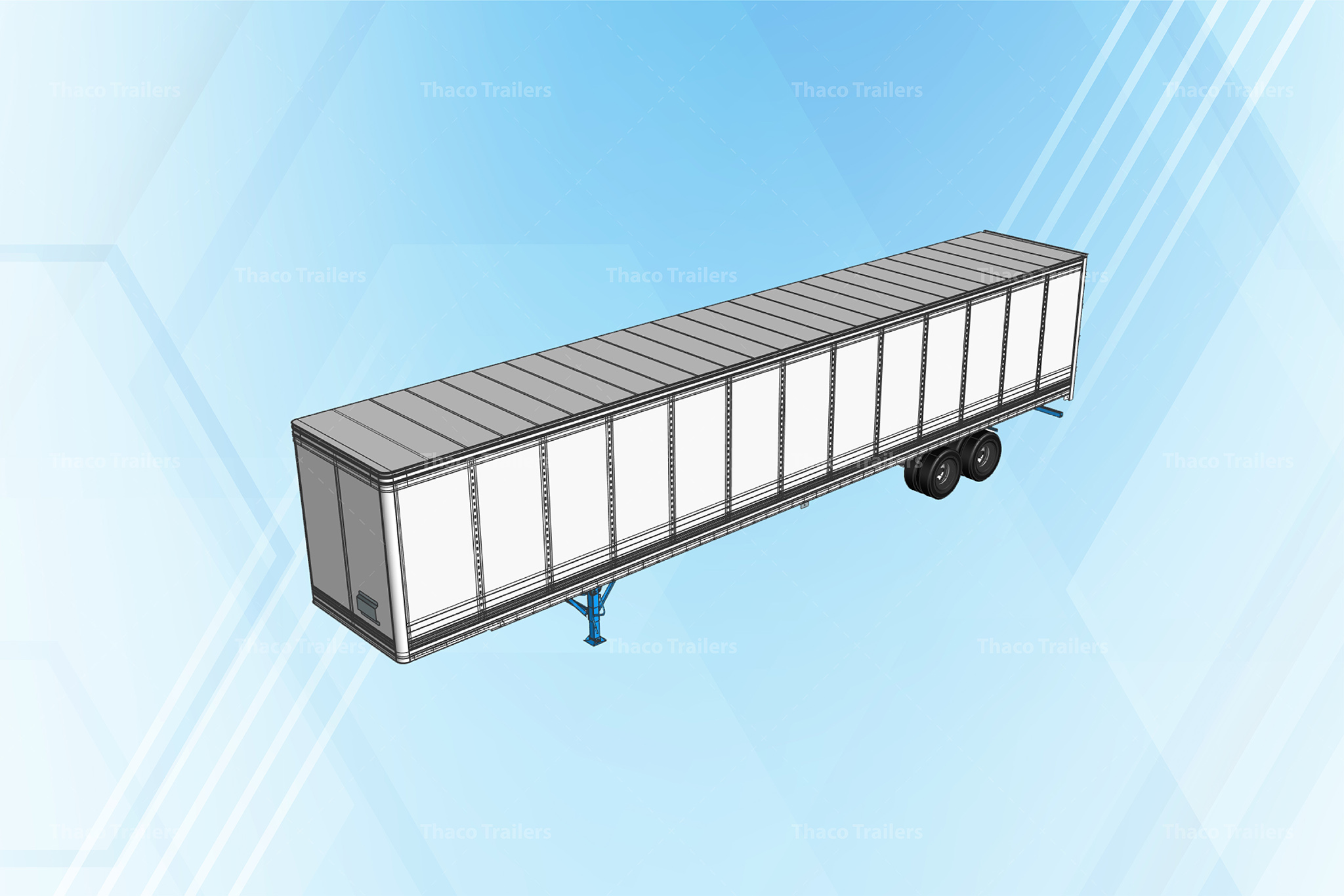
- Refrigerated trailers
A refrigerated trailer, or reefer, is a temperature-controlled semi-trailer designed to transport perishable goods such as food, pharmaceuticals, and other temperature-sensitive products. Equipped with an insulated interior and a built-in cooling system, reefers maintain specific temperature ranges to preserve cargo quality during transit.
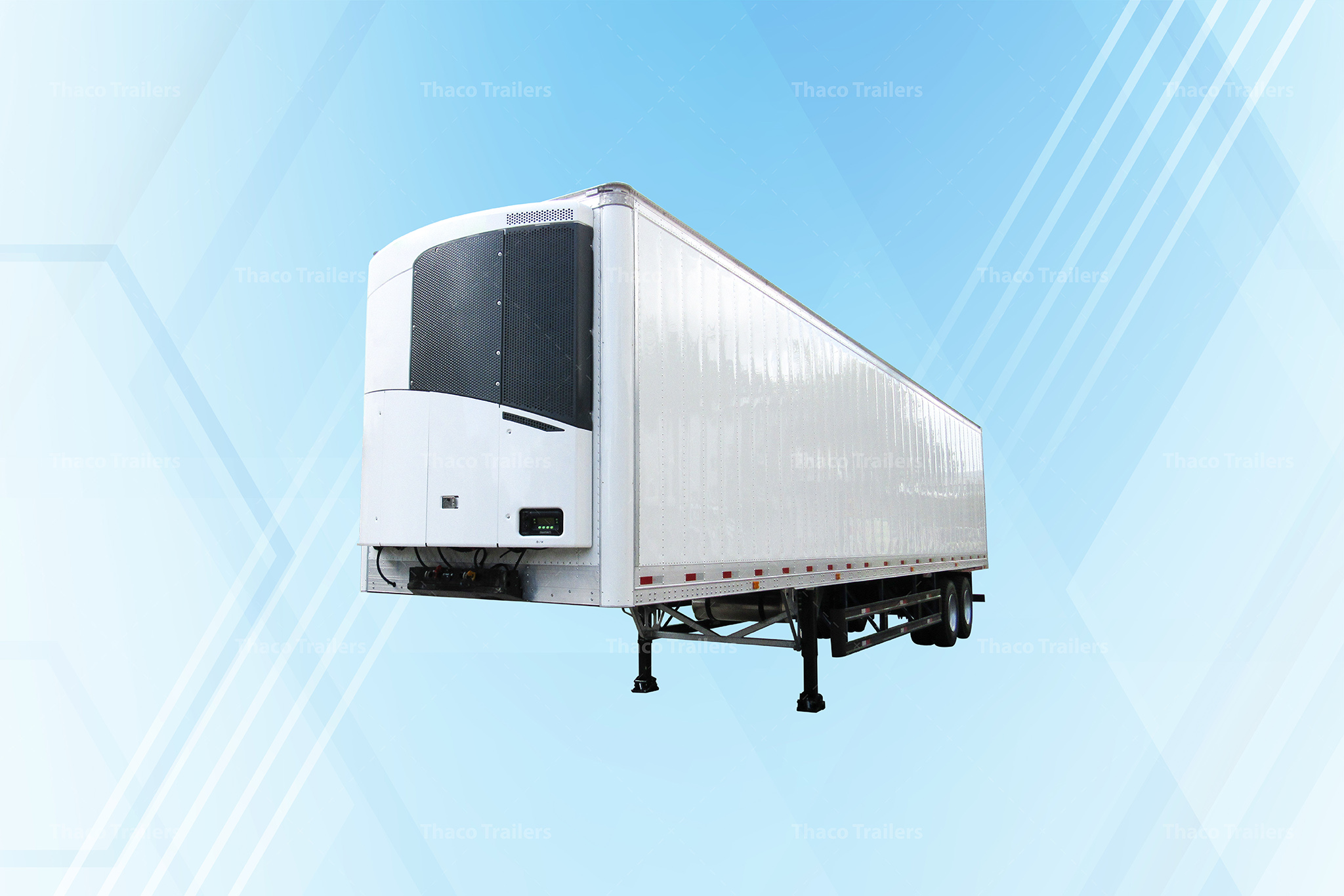
- Step deck trailers
Step deck trailers, often referred to as drop deck trailers, have two deck levels: a higher deck near the tractor and a lower deck after the wheels. This design accommodates taller cargo that exceeds standard height limits. They are often used for transporting machinery, vehicles, and equipment that can’t fit on a standard flatbed.
- Lowboy trailers:
Lowboy trailers are heavy-duty flatbed trailers distinguished by their low deck height, particularly designed for transporting tall and heavy cargo that exceeds the height limitations of normal trailers. The deck includes two drops, located right after the gooseneck and directly in front of the axle group wheels. The distinctive design has a lowered platform situated between the front and rear axles, which improves stability and facilitates the carriage of substantial, heavy equipment such as bulldozers, cranes, and industrial gear.
- Dump trailers
A dump semi-trailer is a trailer designed for the transportation of loose materials, including gravel, sand, or demolition rubble, which may be readily discharged by “dumping” the load. These trailers include a hydraulic lift that inclines the trailer bed, facilitating the discharge of the cargo at a specified place. Dump trailers are often used in construction, mining, and agriculture.
- Car carrier trailers:
A Car Hauler Semi-Trailer is designed to transport several automobiles. These trailers are equipped with racks and movable decks, enabling vehicles to be arranged and secured in many tiers. Car haulers are used by dealerships, rental agencies, and manufacturers for the transportation of new or pre-owned automobiles. Certain types have both open and enclosed arrangements to safeguard cars during transportation.
c. Material and Build Quality
The selection of materials for constructing the trailer significantly influences its longevity, weight, maintenance requirements, and overall performance. Each material has unique benefits, making it essential to choose one that corresponds with your operating requirements.
| Materials | Benefits |
| Steel | Steel is recognized for its robustness and longevity, making it an optimal selection for demanding applications and extended use. It endures severe conditions and rugged landscapes, offering superior protection for the contents. Nonetheless, steel trailers are often heavier, potentially diminishing fuel economy and exacerbating tire wear. Steel trailers are susceptible to rust without adequate care; however, frequent upkeep and protective coatings may extend their lifespan. |
| Aluminum | Aluminum trailers are lightweight and corrosion-resistant, making them ideal for applications where minimizing fuel use and long-term maintenance expenses is crucial. The reduced weight facilitates enhanced cargo capacity without sacrificing strength. Although aluminum often incurs a higher cost than steel, its corrosion resistance and reduced maintenance needs may compensate for the original expenditure. |
| Hybrid | Hybrid trailers include both steel and aluminum elements, providing a compromise between durability and weight reduction. Steel is often used in regions requiring enhanced structural support, such as the frame and axles, while aluminum is utilized for lighter components. This method optimally combines durability in critical areas with weight savings when feasible. |
d. Compatibility with towing vehicle
Ensuring that your trailer is compatible with your towing vehicle is essential for safety, optimal performance, and fuel efficiency. Incompatible setups can lead to increased wear on both the trailer and the towing vehicle, reduced fuel economy, and dangerous handling issues.
- Towing Capacity of Vehicle: The towing vehicle’s capacity must be matched with the weight of the trailer, including its payload. Exceeding the towing vehicle’s limit can lead to mechanical damage, unsafe driving conditions, and increased fuel consumption. Always verify the Gross Combined Weight Rating (GCWR) to ensure the towing vehicle and trailer can safely operate together.
- Brake Compatibility: The towing vehicle’s braking system must be compatible with the trailer, especially when it comes to trailers equipped with electric or hydraulic brakes. Proper synchronization between the vehicle and trailer brakes ensures safer stops, reduces wear on the vehicle’s brake system, and enhances control when hauling heavy loads.
- Tire Compatibility: Matching the tires of the trailer with those of the towing vehicle in terms of size, load capacity, and terrain suitability is crucial. Incompatible tire setups can lead to uneven wear, reduced fuel efficiency, and handling problems. Ensuring that both vehicles have appropriate tires for the load and conditions will optimize performance and longevity.
e. Maintenance and support
Regular maintenance and manufacturer support are crucial for ensuring the long-term performance, reliability, and resale value of your trailer. Investing in a trailer that is easy to maintain with strong manufacturer backing can save you time and money in the long run.
- Ease of Maintenance: Trailers that are designed with maintenance in mind, such as those with easy access to critical components including brakes, axles, and suspension, reduce downtime and service costs.
- Durability of Components: The quality and durability of the trailer’s components, such as axles, suspension, brakes, and frame, are critical factors in reducing the need for frequent repairs. High-quality materials and construction techniques can significantly extend the lifespan of the trailer and ensure reliable performance over time.
- Warranty: A robust manufacturer warranty indicates confidence in the product’s quality and provides peace of mind in case of any defects or issues. Look for warranties that cover major components such as the frame, axles, and suspension, and ensure they are long enough to offer substantial protection.
- After-Sales Support: Manufacturer support, including parts availability and service centers, is important for ongoing maintenance. Trailers from reputable manufacturers with strong after-sales networks can be serviced more easily, with faster access to genuine replacement parts, which helps maintain their value and performance over time.
>>Read more: What are the diferent types of semi – trailer?
1.3 The relationship between chassis and trailer
The relationship between the chassis and the trailer is fundamental. The chassis forms the foundation, providing the structural integrity needed to support the trailer body and ensure safe transport. It plays a vital role in distributing weight, maintaining stability, connecting the trailer to the towing vehicle, and ensuring compatibility with various cargo needs. Without a robust, well-designed chassis, the trailer’s overall performance, durability, and safety could be compromised.
- Structural support: The chassis serves as the backbone of the trailer, giving it the strength and rigidity needed to support the weight of the cargo and the trailer body itself. It absorbs the forces and stresses experienced during transit, especially when driving on uneven terrain or handling heavy loads. A robust chassis ensures the trailer remains structurally sound, preventing issues such as bending, cracking, or instability over time.
- Weight distribution and stability: A well-designed chassis plays a critical role in distributing the weight of the cargo evenly across the trailer. Proper weight distribution helps avoid heavy load specific areas, reducing stress on the axles, tires, and suspension. It also maintains the trailer’s stability, minimizing the risk of swaying, tipping, or handling issues during transportation. A balanced chassis design allows for smoother, safer driving and better fuel efficiency.
- Compatibility with towing vehicles: The chassis ensures that the trailer is compatible with the towing vehicle regarding weight limits, coupling systems, and braking mechanisms. It allows for proper connection between the trailer and the vehicle, ensuring that both can work in sync. A well-matched chassis ensures that the towing vehicle can handle the weight and load demands of the trailer, promoting smoother, safer transport, and reducing the risk of mechanical issues.
2. What is the difference between a trailer and a semi-trailer?
A trailer and a semi-trailer are both used for transporting cargo, but they differ in their design, usage, and the type of vehicle required for towing.
| Trailer | Semi-trailer | |
| Axels | A full trailer typically has both a front and rear axle, allowing it to support its entire weight independently without relying on the towing vehicle. This means all axles contribute to the weight distribution. | A semi-trailer has axles only at the rear. The front part of the trailer is supported by the towing vehicle, typically a truck tractor, through a coupling device similar to a fifth wheel. The tractor bears a significant portion of the semi-trailer’s weight. |
| Weight | Since a full trailer has axles both in the front and rear, it is self-supporting, and its weight is distributed more evenly across all axles. Trailers are typically used for lighter or medium-weight cargo. | A semi-trailer relies on the towing vehicle to support part of its weight. This allows it to carry much heavier loads than a full trailer, as the towing vehicle supports a portion of the weight, increasing the total weight capacity. |
| Self-Standing Ability | A full trailer can stand on its own when detached from the towing vehicle because it has both front and rear axles and its support structure. | A semi-trailer cannot stand on its own without a support system. When detached from the truck tractor, it needs landing gear (legs) to support the front end. |
| Type of Towing Vehicle | A full trailer can be towed by a variety of vehicles, including trucks, cars, or specialized towing vehicles, depending on its size and design. The towing vehicle does not need to bear any of the trailer’s load, except for the pulling force. | A semi-trailer requires a tractor unit (a semi-truck or truck tractor) for towing. The semi-trailer’s design, with its front end resting on the tractor’s rear, means the tractor must bear part of the trailer’s load. |
| Usage | Full trailers are often used for lighter, shorter-haul tasks, or when flexibility in coupling and uncoupling from different vehicles is needed. They’re common in personal use (e.g., RVs, utility trailers) or specific commercial uses where frequent detachment is required. | Semi-trailers are primarily used for long-haul commercial transportation, including heavy cargo or large-volume freight. Their design makes them ideal for intercontinental or cross-country shipping where larger, heavier loads need to be transported efficiently. |
3. Thaco Trailers provides transportation solutions tailored to meet customers’ unique needs
Thaco Trailers offers a comprehensive range of trailers tailored to meet the specific needs of our customers. With a strong emphasis on high performance, maximum payload capacity, and outstanding durability, we deliver efficient logistics solutions capable of overcoming a broad spectrum of transportation challenges. In addition, Thaco Trailers has expanded its presence across North America, including the United States, Canada, and Mexico, as well as other markets such as Australia, Japan, South Korea, and Myanmar. The company’s products meet key North American standards (DOT, AAR, ANSI, TOFC, F(C)MVSS, SAE và TTMA) and are known for their lightweight design, durability, performance, load capacity, and adaptability to diverse market demands.
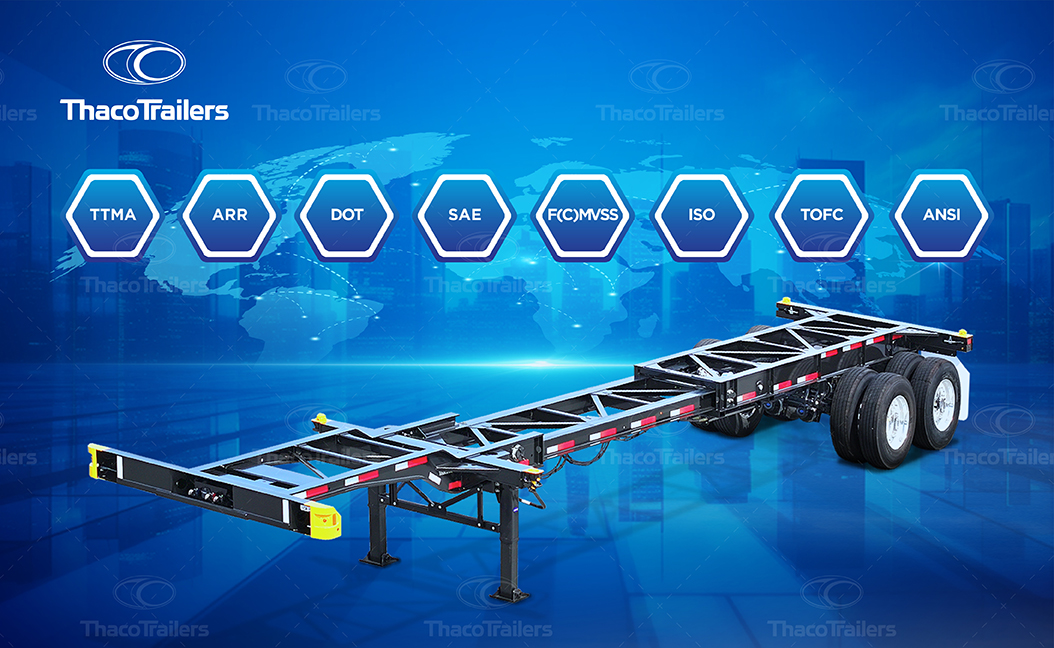
Contact Information:
- Hotline: (+84) 933 805 707
- Email address: thacosv@thaco.com.vn

